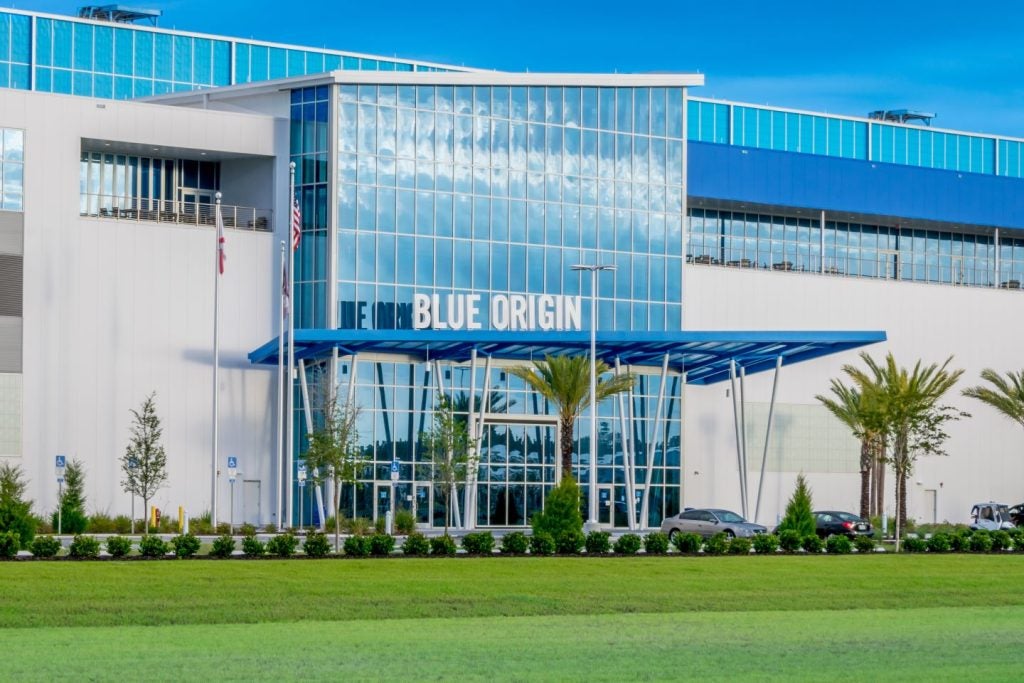
The first public test flight of Xpeng’s new flying car in Dubai went down like a lead balloon. Executives from the Chinese firm hailed it as a demonstration of cutting-edge technology destined to transform transportation at its core. Local dignitaries touted it as an example of the Middle-Eastern city’s futuristic outlook. However, the test flight of the Xpeng 2 multicopter turned out to be a bit of dud.
To be fair, the aircraft did fly, but failed to do much more than that. The electric vertical takeoff and landing (eVTOL) vehicle ascended from the ground, went straight up and then hovered for a while. The assembled press core watched it sit against the Dubai skyline while pop music blasted from speakers – as if trying to drown out the loud buzz of the eight propellers. Then the aircraft descended, landing softly on the grass and turned off its engine. One reporter turned around, shook her head with confusion and asked, “Is that it?”
It was indeed. The test hadn’t included any whizzing around in the air like in the promotional videos shown before the test flight. No aerial acrobatics. No going from point A to point B. Just up, hold and down.
While the Dubai Civil Aviation Authority and some YouTubers applauded the Xpeng 2 for its stability and apparent inherent promise of revolutionising transport, that doesn’t negate from the fact that the vehicle simply went up and then straight down again. Verdict attended the event as part of a media trip organised by Dubai’s Department of Economy and Tourism.
In a way, the test flight highlighted the underwhelming results of eVTOLs so far. Despite billions of dollars being ploughed into the industry in recent years, and over a century of innovation, real-life flying cars used by everyday people have yet to take off.
Technological and regulatory restrictions have prevented them from becoming a reality in the past. Those challenges haven’t evaporated. Instead, they are still firmly anchoring the dreams of everyday air taxis to the ground.

US Tariffs are shifting - will you react or anticipate?
Don’t let policy changes catch you off guard. Stay proactive with real-time data and expert analysis.
By GlobalDataThis hasn’t kept startups around the world from issuing bullish missives over the years, proclaiming that the future is nigh. Those boisterous ‘pronunciamentos’ are only the latest in a long line of would-be visionaries.
People have dreamed of flying cars for decades
Dreams of aerial automotives have been around for over a century. Jules Verne introduced The Terror, a car-plane-speedboat-submarine hybrid, in his novel Master of the World in 1904. Since then, similar innovations have been abundang in pop culture. Everything from The Jetsons to Westworld have featured flying cars, suggesting that their real-life counterparts are just around the corner.
“According to Back to the Future, we’re about seven years overdue when it comes to see flying cars,” James Jackson, CEO of car repairs repayment platform Bumper, tells Verdict.
Innovators have endeavoured to turn those visions into reality even longer than than that. Amateur historians are wont to point out that entrepreneurs have attempted to get carriages airborne for almost two centuries.
Arguably, the world’s first flying car was patented as far back as in 1842. However, the aerial steam carriage – a bulky steam-powered monstrosity designed to carry passengers – never took off. It was simply too heavy. While a newer version unveiled in 1848 managed to fly short distances within a hanger, the developers soon ran out of money and were forced to abandon the project.
There has been no shortage of similar projects in the decades since the aerial steam carriage failed to take off. The Flying Flea, The Curtiss Autoplane, the Arrowbile, the ConvAirCar and the Aerocar were all attempts destined to end up on the scrapyard of history. They failed due to the limitations of the technology of their time and because of a lack of funding.
Now, a new generation of innovators are now hard at work trying to make flying cars a reality, with some predicting that their efforts will pay off as early as next year. However, the odds are not in their favour.
Startups’ timeline may be too optimistic
Today, multiple startups around the planet are dedicated to getting eVTOLs off the launchpad and into people’s everyday lives. Often, they’ve not only made their plans public, but also provided optimistic timelines about when those ambitions could bear fruit.
Ride-hailing giant Uber is one of the companies that have made particularly positive predictions in the past. Back in 2018, the taxi service projected that it would deploy its air taxi service, Uber Elevate, in 2023. Uber later doubled down on that pledge in January 2020 when it announced a partnership with Hyundai to develop an aerial ride-sharing network. However, Uber later sold its air taxi unit to the startup Joby Aviation in December 2020.
One year later, the CEO of city transportation policy company Lacuna Technologies predicted that flying cars could be commercially available in 2024. After completing the first phase of its test flights in 2019, Munich-based Lilium said it aimed to begin commercial flights in 2025.
While those estimates make for great headlines, those bullish proclamations tend to crash hard when faced with the realities of the world. The truth is that the same problems that have hobbled flying cars for the past decades are still very much in play today – limitations in technology and regulatory hurdles make those time frames extremely optimistic.
“NASA believes it will be [roughly] 10 years before the regulatory climate will be ready for scalable air taxi operations, and for many regulatory bodies, flying cars are far from a top priority,” Emilio Campa, former analyst at research firm GlobalData, tells Verdict.
Given regulators are still trying to hammer out the kinks around autonomous vehicles, turning their attention towards flying cars certainly doesn’t feel like a priority.
Technology challenges holding back flying cars
Flying car startups must overcome mammoth challenges before bringing eVTOLs into the mainstream. For starters, they are constrained by today’s technological limitations.
Present day aerial automotive firms are held back by the same thing that rooted the aerial steam carriage to the ground: their weight. To be more precise, the weight of the power used.
“Batteries are definitely the major limiting factor here, due to their weight and the distance that they can power an airborne vehicle for,” Aziz Tahiri, vice-president of global aerospace and defence at digital reality company Hexagon, tells Verdict.
Modern multicopters run on electricity, which means they require batteries. However, those batteries can only hold a finite amount of energy. For longer journeys, flying cars would need more or bigger batteries. The problem is that the more batteries you add, the heavier the aircraft becomes, meaning the aircrafts become heavier and require more batteries.
A risk with overloading these vehicles is that it tightly packed batteries that either charge or discharge quickly overheat and catch fire, unless precautions are taken.
As a result of the battery constraints, eVTOL vehicles only have a limited flight time before they need to be recharged. The Xpeng 2, for instance, only has 35 minutes of flight time before requiring a recharge.
Companies around the world are working double-time to build new and better batteries – for instance by trying to find new chemical compounds to replace the common lithium-ion ones used to day – capable of storing more power. However, until that research bears fruit, flying cars are likely to remain a moonshot fantasy.
These constrains also mean flying cars can only carry limited loads. One of the vehicles produced by German startup Volocopter’s can fly up to 30 kilometres carrying a 160kg payload. So that’s basically two average-sized people with some serious luggage restrictions.
Regulations keep eVTOLs from taking off
The short flying time of today’s models also highlights another hurdle facing the industry: regulation. Visual flight rules require aircrafts to have enough fuel to fly for 45 minutes after they’re estimated to have reached their destination.
“Electrically powered aircraft breaches the regulation at the moment of takeoff due to inefficient battery storage, Corvin Huber, founder of air management system developer Skyroads, tells Verdict.
The flight time isn’t the only piece of red tape flying car manufacturers must cut through. Lawmakers and regulators are also concerned about things like safety, noise pollution, training, certifications, cybersecurity, infrastructure and the environment, as highlighted in a 2020 article by researchers from the US, Greece and the UK. For flying cars to become commonplace, not only do these issues have to be addressed, but new rules and certifications must be established.
“Existing standards do not cover all the technical variants proposed by industry,” Huber says. “The speed at which certification authorities make these certification baselines available to industry has major impact on how fast services can and will become operational.”
In the UK, The Aviary Project has been launched to bring together consultancies, vehicle designers, airspace integrators, and government, with the aim of moving closer to the adoption of urban air mobility in the UK. It’s unclear when those efforts will yield any results.
That being said, regulations could also be the source of new opportunities in this space.
“Future regulations are also likely to focus on noise pollution in cities – a design requirement will be on keeping the vehicles as quiet as possible, and set caps on the amount of noise pollution permitted by eVTOLs,” Tahiri suggests.
Do people actually want flying cars?
Technological challenges and the eye-watering amount of red tape eVTOL manufacturers must cut through before getting their multicopters off the launchpad aren’t the only obstacles standing in these companies’ way. Some market watchers are even unsure if people actually want flying cars to begin with.
“Much like Elon Musk’s Hyperloop and Boring tunnel concepts, flying cars feel like another concept that comes from this idea of ‘elite projection,'” Campa says.
Elite projection is a term defined by public transit expert Jarrett Walker as the belief among relatively fortunate and influential people that what those people find convenient or attractive is good for society as a whole. However, Campa suggest that this intellectual fallacy doesn’t translate to a real demand.
“Currently, your average person does not use a helicopter to get to work. They use buses, trains, bikes, and cars. How a flying car would fit into the average person’s day is unclear. Maybe use cases will arise for more high-end experience-based travel, but demand and market size for this is unclear.”
Even if all the technological issues were solved, the regulatory hurdles smoothed out and people were interested in buying flying cars, it would initially probably only be a select few. A Lilium seven-seat jet is estimated to cost around $2.5m. Comparatively, the Xpeng 2 is priced around $139,200.
Challenges haven’t stopped the flow of funding
That skepticism may shock industry watchers who have seen the amount of funding going into the sector. As pointed out by Crunchbase’s Joanna Glasner earlier this year, “the eVTOL aircraft industry is relatively mature by startup standards. Older players in the space have been around a decade or more, and total known equity funding to date is well over $5bn.”
For some flavour of the kind of deals we’re talking about here, some of the recent cash injections include Xpeng securing $500m in a Series A round in 2021 and Volocopter bagging $170m in a Series E funding round in March 2022 at a $1.7bn valuation.
Arguably the most well-funded startup in this sector, Joby Aviation, picked up a $60m investment in October 2022, bringing its total funding to date to $1.7bn, according to Crunchbase.
“There’s a definite race to market, with startups taking the lead,” Tahiri says. “This is because this is a technology-driven market, and startups are more likely to invest in longer-term projects with private and public funding bolstering their technological agility. They have nothing to lose, and all to win.”
Indeed, research from Fortune Business Insights estimates that the industry was worth $55m in 2021, but the market would grow to $1.5tn by 2040. Investment bank Morgan Stanley has come up with the same figure in its own research. Allied Market Research estimated that the market would be worth $215m in 2025, but that this figure would skyrocket to $1.6tn in 2035.
Market watchers believe startups won’t have this industry to themselves for long, with aerospace companies like Embraer, Boeing and Airbus as well as automotive giants such as Hyundai having made their first cautious steps into the sector by either developing projects of their own or by inking partnerships with startups in this space.
Why are people so excited about flying cars?
With all the challenges facing the industry, one may wonder why investors have injected billions of dollars into the eVTOL industry. The answer is that, despite all the risks, flying cars could deliver huge potential benefits to society.
“To many, [flying cars] represent the dawn of the age of future travel, a green and sleek solution to congestion and urban mobility,” Tahiri says. “Aside from the futuristic appeal, flying cars also have practical benefits that add to the allure. With multiple possible planes of travel, traffic congestion could be a thing of the past, which means less time wasted in traffic jams, and no more idling engines pumping unnecessary CO2 into our atmosphere.”
Nevertheless, it seems unlikely that there will be an eVTOL aircraft parked outside everyone’s home in a few years time.
“[These] types of vehicles wouldn’t be practical for daily use, as they might be very expensive to run and require different infrastructure for taking off,” Matas Buzelis, head of communications and an auto expert at carVertical “The maintenance of aviation is usually very expensive.”
Understandably, several of the startups in the sector aren’t marketing themselves to private people looking for a new vehicle of their own. Instead, they are positioning themselves to provide shorter air taxi services from one end of a city to another. They are also marketing themselves as a way to connect smaller towns and suburbs outside of major metropolises, enabling cities to tap into a bigger talent pool.
“eVTOLs introduce a future of high-speed, quiet and sustainable transport,” A Lilium spokesperson tells Verdict. “They can deliver a high-speed network service that will ensure people save hours, not minutes. This type of regional mobility network has the potential to connect millions of people in big cities as well as smaller communities with high speed, regional connections, at a fraction of the cost of a similar high-speed rail link, replacing broken transport infrastructure.”
A similar service did exist in New York back in the 1960s and 70s, but with helicopters. The service shuttled passengers between the Pan Am building, a Manhattan skyscraper, and the John F Kennedy airport. While helicopters are much louder than modern multicopters, that wasn’t much of a problem as the vehicles landed on a pad 60 stories above street level. A helicopter crash resulting in several deaths caused the service to shut down in 1977.
For a modern iteration of air taxis to become a reality, all the challenges around infrastructure, licensing and regulation mentioned earlier must be solved first.
Even if the different timelines offered by the industry over the years have been highly optimistic, one could see some iterations of flying cars in the next few years.
For instance, France has begun to test electric air taxis provided by Volocopter, with the aim to be able to ferry passengers in time of the 2024 summer Olympics.
“We are also seeing this commitment at regional levels,” Tahiri says. “Large, forward looking cities that are technology pioneers such as Paris, New York and London are looking to demonstrate their capabilities by making plans for eVTOL introductions, while fast-growing hubs such as Dubai, Rio de Janeiro, Shanghai and Beijing are also making moves and may even beat these countries to it, due to their ability to fast-track local regulation.”
So, when will we see flying cars? Well, the answer to that is still up in the air for now.
GlobalData is the parent company of Verdict and its sister publications.






